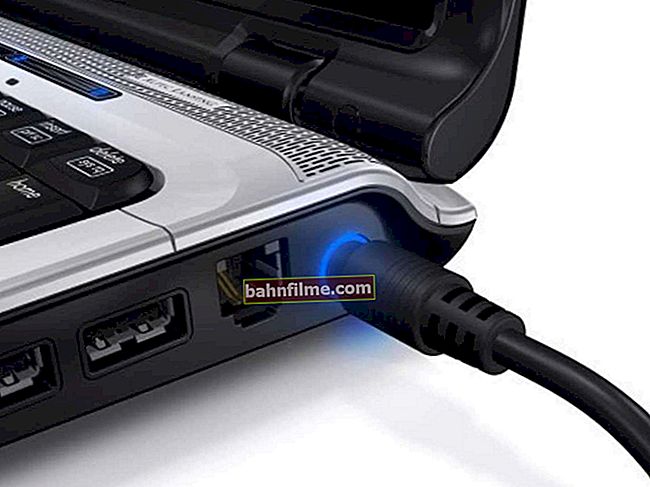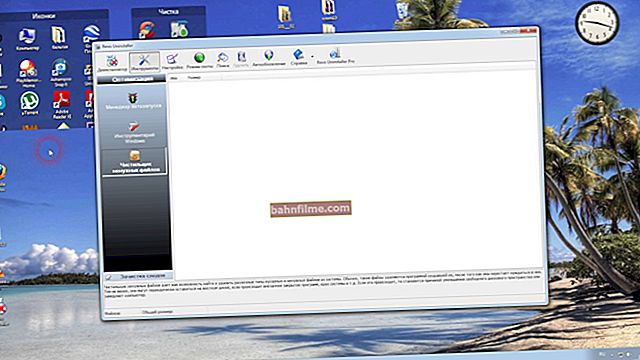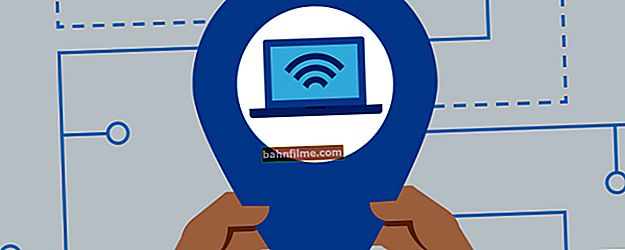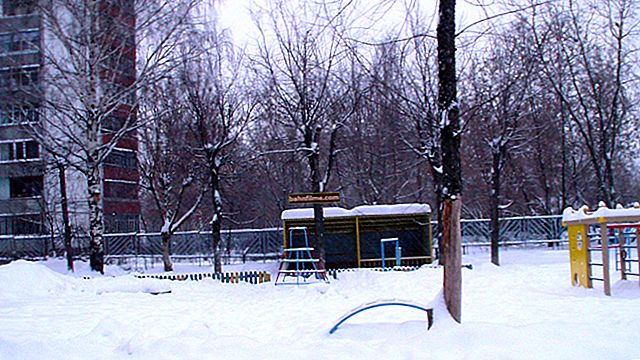
User question
Hello.
I lost the Internet (the yellow exclamation icon in the Windows tray is lit), and in the browser, when I try to open any page, the error "Cannot find the DNS address" is written. I don't know what to do, how to fix the error and get the Internet back.
I tried to run the Network Diagnostic Wizard - but it gave an error that the DNS server is not responding. Please give me a solution ...
Thanks in advance, Andrey.
Good day!
I must say that such an error is quite popular, and the cause of its occurrence can be both incorrect Windows settings and problems of your Internet provider.
In this article, I will analyze all the most basic, which is why this error appears and I will give recommendations for eliminating them. 👌
So...
*
How to deal with a DNS server not responding error
STEP 1: reboot the router and computer. Run diagnostics for network problems
No matter how trivial the advice is, and still the first thing I recommend isreload a laptop / computer and a router (if you have one (many providers now set it "automatically" when connecting)).

To turn off the laptop, press the power button for 10-15 seconds.
👉 Note: to reboot the Wi-Fi router, just disconnect it from the power supply for 15-20 seconds. There is also a special for this case on the device case. button.
After rebooting, I recommend running diagnostics for network problems (it often solves many problems with Internet access). 👉 For run diagnostics - right-click on the internet icon in the tray  and from the pop-up menu select "Troubleshooting" (see screenshot below).
and from the pop-up menu select "Troubleshooting" (see screenshot below).

Diagnosing network problems
The diagnostic result may be unpredictable: in my case, the error appeared again (example in the screenshot below). But nevertheless, quite often after a reboot - the network starts working in normal mode ...

Windows network diagnostics / error again!
*
STEP 2: connect another device
If you are using a router (router), try connecting another device (for example, laptop, phone, etc.) to the Wi-Fi network.
Important check - whether there will be an Internet connection on this device, whether there are any errors related to the DNS server. If the problem is with a specific PC / laptop, then the network will function as usual on other devices.
To check, by the way, you can even connect a regular phone to a Wi-Fi network (say). You can also try unplugging your router and connecting your internet cable directly to your computer's network card.
👉 Note!
Settings and parameters that need to be set for the Internet to work - see the agreement with your Internet provider. All comprehensive information should be there.
In this case, you will most likely need to create a PPPoE connection (* depends on how your ISP's network is built). You can find out how to create a PPPoE connection 👉 in one of my articles.
*
STEP 3: are the network settings correct. Automatic DNS acquisition
Let's go to the main thing!
Most often, DNS-related problems and errors occur due to unfaithful (lost) network connection settings. Therefore, I suggest checking them out first!
To see all network connections, click WIN + R, enter in the line "Open" commandncpa.cpl and press Enter (as in the screenshot below).

ncpa.cpl - View all network connections
Next you need open properties the connection through which you access the Internet.
Most often it is either "Wireless network connection" (if a router is installed and a Wi-Fi connection is created, more often on laptops), or "LAN connection" (Ethernet) - if the PC is connected to the Internet with a network cable.

Connection properties
Next, you need to select the line "Internet Protocol Version 4 (TCP / IPv4)" and open it properties ... See screenshot below.

Internet Protocol Version 4 Properties
In the "General" tab, you need to set the IP address and DNS servers. There can be two situations here:
- 👉 first - just put the sliders in the position of obtaining the IP address and DNS servers automatically (as I have in the screenshot below). By the way, most of the Internet providers have it (they do not create unnecessary problems for the user 👌). But there are exceptions, see below;
- 👉 second - you need to specify a specific IP address and specific DNS servers. What you need to indicate: you need to look in your agreement with the Internet provider (or check with him). If you enter these data incorrectly (or, if they have been changed), then the Internet will not work for you!

Obtain DNS server addresses automatically
*
STEP 4: try to install Google DNS
It happens that Internet providers (most often small ones) have buggy DNS servers (which is not good). It is clear that Google's DNS servers are faster, free and much more stable.
Therefore, by registering them in the connection settings, you can often quickly restore the normal operation of the Internet. You need to register them in properties network connection (how to open these properties - described in the previous step ☝).
👉 To help!
How to change DNS in Windows, and how to choose the fastest public DNS server.
DNS servers:
8.8.8.8
8.8.4.4
If you have a Wi-Fi router installed - then it would be more correct to write like this:
192.168.1.1 (either 192.168.0.1 or 192.168.10.1 - the router's IP address is registered);
8.8.8.8

DNS servers from Google
*
STEP 5: Attempt to clear the DNS cache (and other parameters) on the command line
It is not uncommon to get rid of a DNS-related error by clearing the cache. This can be done from the 👉 command line, open as administrator.
To open a command prompt with administrator rights, you need:
- start task manager (combination of buttons Ctrl + Shift + Esc or Ctrl + Alt + Del) ;
- in the task manager, click file / new task ;
- and into the line "Open" to introduce CMD , tick "Create a task with administrator rights" and press Enter.

CMD as administrator
Next, you must execute the following commands one by one (after each of them you need to press Enter):
- ipconfig / flushdns
- ipconfig / registerdns
- ipconfig / release
- ipconfig / renew

CMD - enter 4 commands one by one
After completing these 4 commands, restart your computer / laptop.
*
STEP 6: check the DNS client service - is it working on Windows
You also need to check if the DNS client service is running on Windows (by default, it should work, but you never know ...).
To do this, press the key combination WIN + R, and enter the commandservices.msc, press Enter.
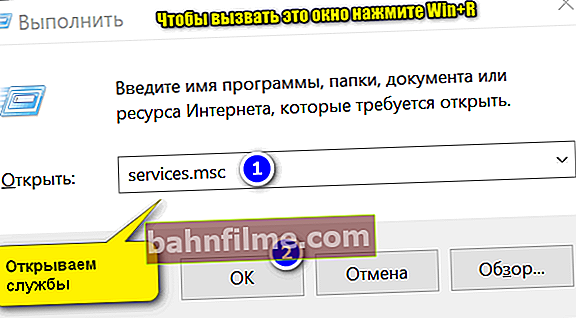
Opening services - services.msc (universal method)
Next, a window with services in Windows should appear - find the "DNS client" service 👇. It must be opened (note: just double-click on it with the left mouse button).

DNS client service
Next, in the properties of the service, set the automatic startup type, and in the status bar, make sure that the service is running (if not, start it!). See screenshot below.

We start the service, set automatic start
Then restart your PC.
*
STEP 6: no drivers for the network card
If you do not have drivers for the network card (through which you have a connection to the network), then you will not have the Internet at all (and a DNS error in this case, as a rule, does not appear often ...).
To find out if you have drivers for the network card, open 👉 Device Manager. To do this, click WIN + R, and enter the commanddevmgmt.msc.
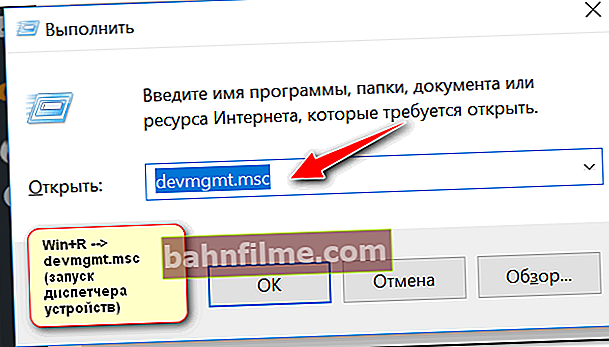
Launching Device Manager - devmgmt.msc
Next, see if you have any devices opposite which a yellow exclamation mark is lit (most often, they are in the "Other devices" section). If there are such devices, it is necessary to update the drivers for them.

Task manager - there are no drivers for the Ethernet controller (that is, for the network card)
In general, the topic of updating drivers is quite extensive, so here I suggest you familiarize yourself with my previous articles, everything is written there! Links below.
👉 To help!

1) Software for updating drivers - the best: TOP 20 / rating!
2) How to correctly install drivers on a computer, laptop.
3) How to find and install a driver for an unknown device.
*
STEP 7: are your antivirus and firewall configured correctly
It is not uncommon for an error to appear stating that DNS servers have stopped responding after installing / reinstalling antivirus and security software.
Also, this can be observed when you enable the highest possible level of protection in some antivirus products.

Disable Avast antivirus for 1 hour
Therefore, the recommendation here is simple - try to temporarily disable (or even remove) your antivirus (firewall). If the error stops appearing, I think it is worth changing the antivirus, or setting the optimal settings in it ...
*
STEP 7: Contact your ISP support
Last but not least, if all of the above fails, try reporting the issue to your ISP. It is possible that the problem is on their side ...

Provider meme
PS 1
If the ISP says that everything is "OK" on its side, as an option, try to restore Windows (if there are checkpoints, to the date when everything worked).
You can find out how to find out what points are, and how to start recovery 👉 in this article (article relevant for Windows 7/8/10).
PS 2
If anyone has an alternative solution to this error, drop a couple of lines in the comments. Thank you in advance.
Have a nice day!
👋
First publication: 10/28/2017
Correction: 01/15/2020

